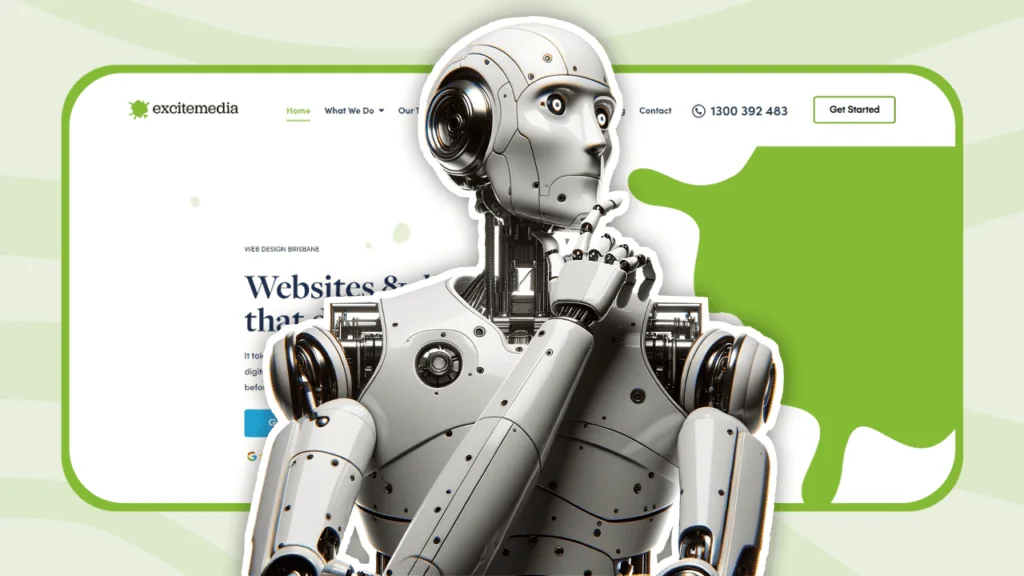We’re at an exciting point where technology and creativity are rapidly joining forces. AI is teaming up with design, leading the industry into a new era where these two areas are blending in exciting ways. This article is about how we, as designers, can leverage AI to improve the quality and speed of our work.
Like with most areas of artificial intelligence, this is becoming a really great tool in our kit.
Table of Contents
ToggleHow is AI helping designers now?
Design is constantly changing, and our tools are getting more advanced. AI is quietly changing how we design, from making rough drafts to improving how users interact with our work. Let’s explore some of the ways AI is helping designers right now.
Generative design tools
Adobe has recently added new AI tools to its existing suite of tools that make editing photos and performing arduous graphic and photo editing tasks much easier and quicker. One handy tool is the new “Select Subject” option, which uses AI to quickly pick out the subject of an image.
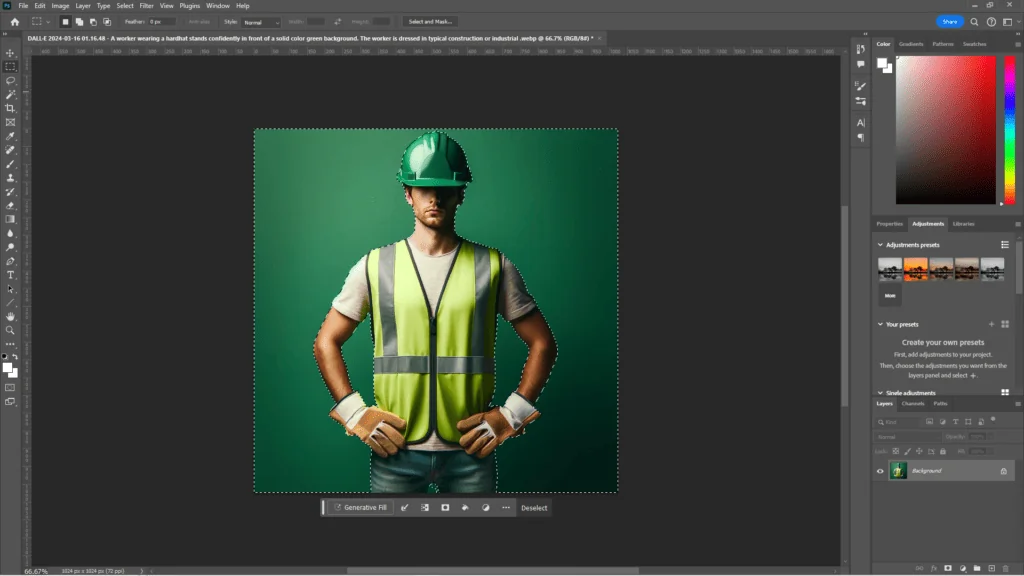
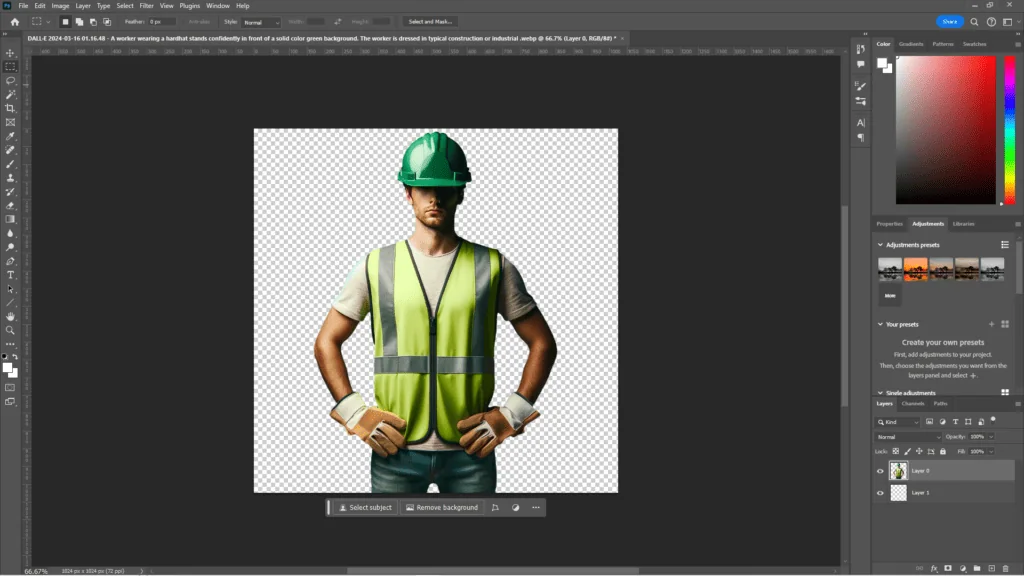
This is really useful to quickly separate the main subject from the background, a job that used to take a lot of careful work and too much time zooming in and out.
There’s also the “Enhance Details” feature, which makes photos look clearer and better. This is especially useful when you need really sharp images for big prints or screens.
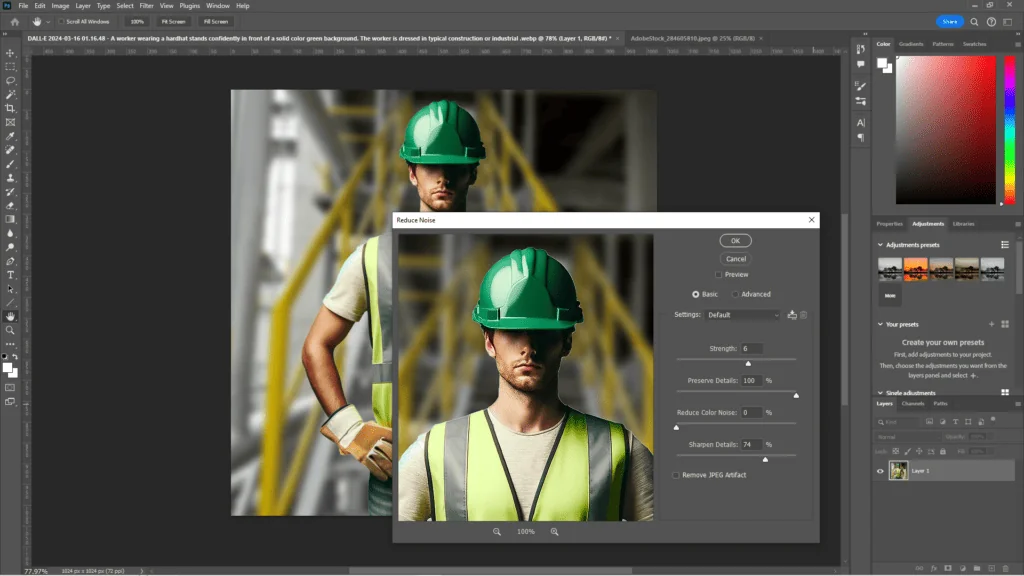
Of course, as good as these tools are currently, there is still room for improvement, and with how fast AI is developing, it won’t be too long before these become a one-click solution for a lot of time-consuming tasks.
Another great addition is the “Neural Filters”. These filters use AI to change individual elements of a photo in ways that were hard to do before. As an example, one of these filters is the “Smart Portrait” filter. This lets you change things like facial expressions, age, where someone is looking, and hair thickness in pictures of people.
These changes are applied to the photo while maintaining the same real and natural qualities as the original. These new AI features in Photoshop are not just time-savers. They also let users be more creative in how they edit their photos.
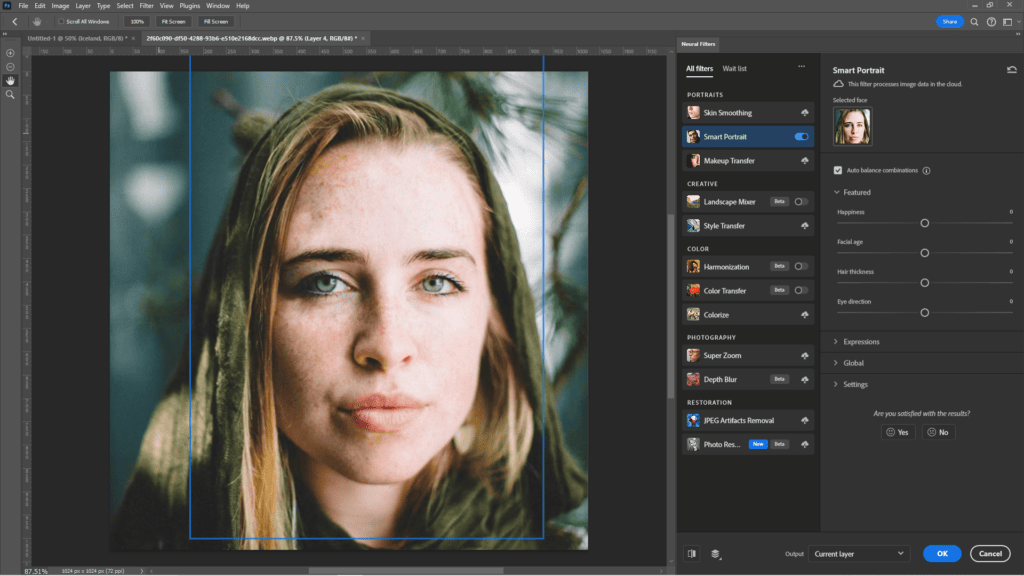
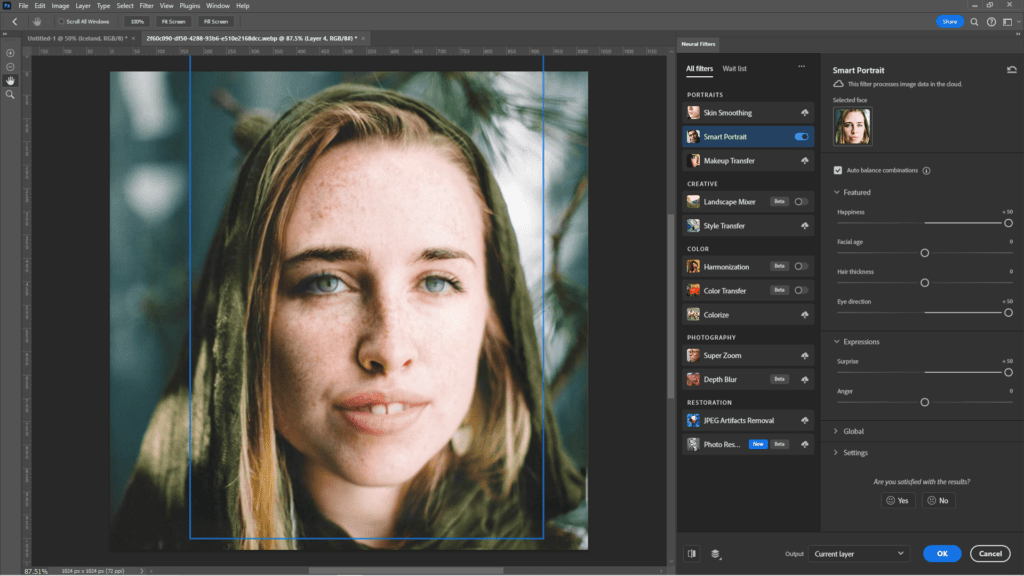
What is AI good at?
I’m sure you’ve already seen some of the mind-blowing visuals that can be created with the power of AI. Modern visual AI tools like MidJourney and DALL-E use artificial intelligence to generate stunning, often surreal visuals from simple text descriptions.
For example, you can type a brief description, and the AI will create a matching image, bridging the gap between imagination and digital visualisation.
This isn’t just a breakthrough for artists and designers, offering a new, limitless canvas for exploring creative ideas, but it’s also accessible to anyone interested in visual creation.
Whether it’s for professional artwork, educational purposes, or just for fun, these tools provide a unique way to visually bring thoughts and concepts to life, showcasing the incredible potential of AI in the realm of creative arts.
Speed & efficiency
In design, time is essential. AI helps do tasks quickly, turning long jobs into fast ones. This enables designers to work faster and more accurately. But it also means they can spend more time on being creative and fine-tuning the details — not hours-deep in Photoshop.
Consistency
AI is excellent at keeping things consistent. It ensures your designs stay true to your brand, like a helpful assistant checking your work.
Data analysis
Data can be overwhelming, but AI is like a diving buddy. It can quickly sort through lots of data and find patterns the average human might miss.
Automating routine tasks
Design can involve tedious, repetitive tasks — like resizing the same image for multiple platforms, formatting different layouts, or colour updates. AI can do these for you, letting you focus on being creative.
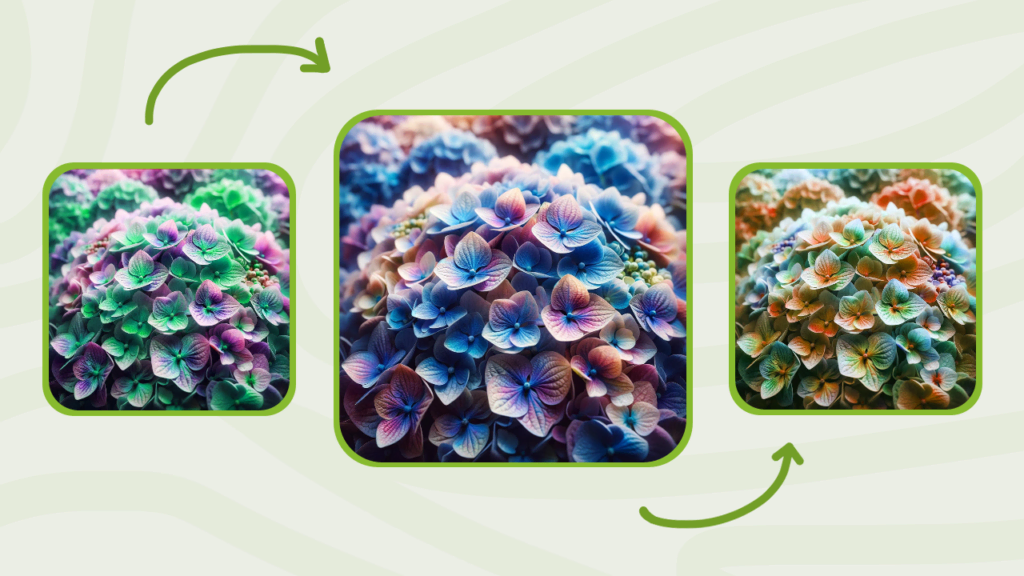
What AI hasn't perfected yet
AI is impressive, and even though we will see dramatic improvements in the next few years, humans still do better in some areas.
Human insight & creativity
Creativity often comes from emotions and experiences. AI sometimes struggles with the human touch that sparks creativity. It can follow patterns really well, but finding real inspiration is harder.
Understanding context
AI is good at many things, but understanding cultural or emotional contexts isn’t one of them. Sometimes, AI misses the mark on subtle references or feelings.
Ethical & bias issues
AI learns from data, which can reflect society’s biases. It can sometimes be unfair, favouring one group over another. We’re working to remove these subtle biases through prompt engineering and careful considerations in how we use artificial intelligence.
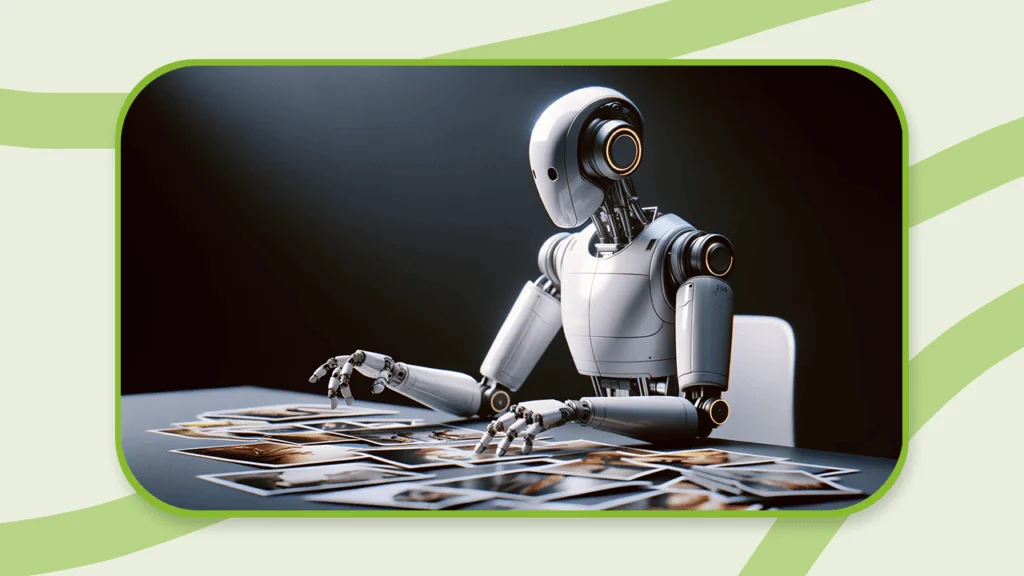
The future with AI & design
The future of AI and design is here, and it’s a fascinating time for designers. Let’s look at some of the possibilities.
Integrated assistance
Imagine designing software with an AI assistant. This assistant, like a silent mentor, could suggest small changes as you work.
Automated testing & feedback
AI tools could instantly test designs and give feedback, like a focus group that’s available at the click of a button.
Voice-assisted, gesture-based & immersive design
We’re moving towards using voice, gestures, and immersive experiences in design, with AI leading the way.
Continuous learning & evolution
AI will help us keep learning and evolving, keeping us up to date with new trends and ever-changing best practices.
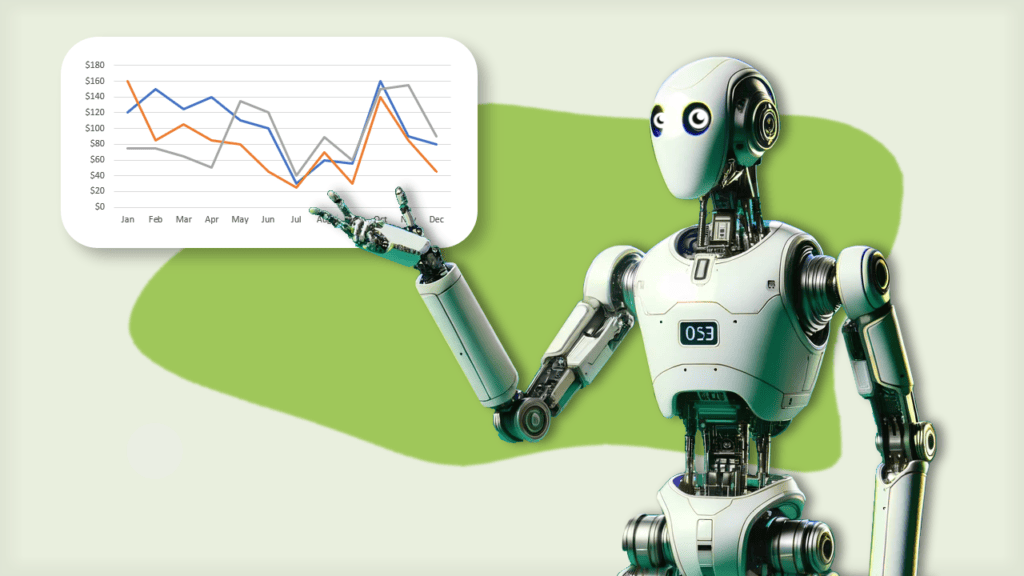
AI and design are becoming closely linked. This partnership promises better, more innovative designs. But it also brings challenges and lessons to be learned. It’s our job to blend AI’s abilities with human creativity. As we move forward, AI will help light the way in the design world.
Excited about the future of AI and design? Let’s talk more!

